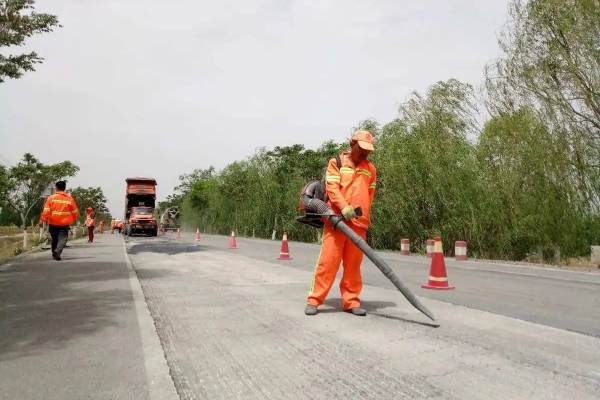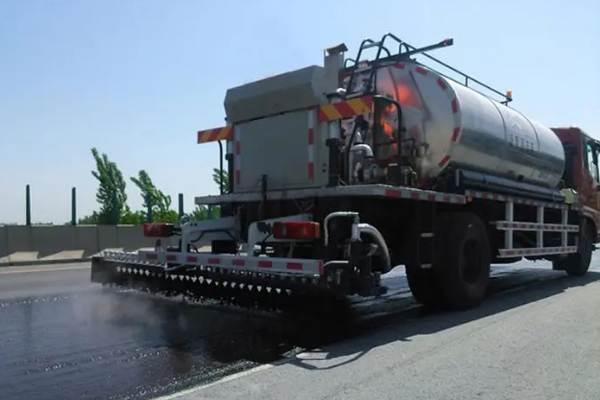Among the construction techniques of currently completed and planned highways, more than 95% are semi-rigid base asphalt pavements. This road pavement structure has advantages in terms of construction cost and load-bearing, but it is prone to cracks, loosening, slurry, and voiding. , subsidence, insufficient subgrade strength, subgrade slippage and other deep-seated diseases. It is not easy to treat deep-seated road diseases. The traditional maintenance plan is generally: do not treat the deep-seated diseases in the early stage and let them develop; when the deep-seated diseases develop to a certain extent, cover them or add pavement; and when the deep-seated diseases are serious enough to affect traffic, Then carry out excavation treatment, that is, traditional large and medium-sized maintenance construction, and the disadvantages it brings are also very obvious, such as high cost, serious waste, impact on traffic, impact on the environment, etc. In such an environment, extending the service life of roads, reducing the cost and waste caused by road maintenance, and improving the overall quality of roads have become a new round of topics.
With the rapid development of science and technology, in response to the above problems, our core concept is to strengthen daily preventive maintenance of roads, detection of deep-seated diseases, and treatment of deep-seated diseases.
Preventive maintenance of pavement is a planned proactive maintenance of the pavement when the pavement structure is basically intact and the pavement condition still meets the functional requirements. Different from the traditional maintenance principle of "don't repair the road if it's not broken", preventive maintenance of asphalt pavement is based on the premise that the original pavement structure will not be changed basically, and is not aimed at improving the strength of the pavement structure. When there is no obvious damage to the pavement or only minor signs of disease, , or if it is foreseen that diseases may occur and the road surface condition still meets the functional requirements, carry out planned proactive maintenance on the road surface.


The purpose of preventive maintenance of asphalt pavement is to maintain good pavement functions, delay the attenuation of pavement performance, prevent the occurrence of pavement diseases or the further expansion of minor diseases and disease signs; extend the service life of the pavement, reduce or delay the correction and maintenance of pavement diseases; The total cost of maintenance is low throughout the entire pavement life cycle. The popularization and application of preventive maintenance has achieved the effect of "less maintenance" through "early maintenance" and "less investment" through "early investment".
The opposite of trenchless treatment technology for deep disease is excavation technology. Excavation technology is a commonly used treatment technology for deep road diseases and is often a passive treatment method. Since the base layer is below the surface layer, the traditional treatment method requires digging out the surface layer before processing the base layer. As mentioned above, this method not only takes a long time to construct, but also requires traffic closures, which has a greater impact on society and the economy. Therefore, it is not easy to use it, and it can only be treated when the deep-seated diseases in the grassroots develop to become dominant diseases or serious superficial diseases on the surface. The technology of trenchless treatment of deep-seated diseases is equivalent to "minimally invasive surgery" in the medical field. The total area of ??"wounds" when treating road diseases is generally not greater than 10% of the total area of ??the disease. Therefore, it causes little damage to the road, and the construction period is short and expensive. It is low, has little impact on road traffic, and is environmentally friendly. This technology is aimed at the characteristics of semi-rigid road structural diseases and is very suitable for treating deep-seated diseases on my country's roads. In fact, before the "Technical Regulations for Trenchless Treatment of Deep Road Diseases" was promulgated, the trenchless treatment technology for deep road diseases had been applied many times across the country and achieved good results.
The sustainable development of the road maintenance industry is inseparable from technological and conceptual innovation. In the process of innovation, what often hinders us is not whether the ideas and technologies themselves are excellent, but whether we dare to break through the constraints of the original model. Perhaps it is not advanced enough and needs to be gradually improved in future applications, but we should support and encourage innovation.

